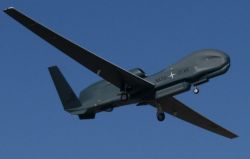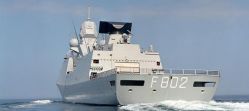NATO's First Alliance Ground Surveillance Aircraft Takes To Skies

Northrop Grumman and NATO’s Alliance Ground Surveillance Management Agency (NAGSMA) successfully tested an AGS derivative of Global Hawk unmanned aircraft.
“The NATO’s first Alliance Ground Surveillance (AGS) aircraft is part of a system that will allow NATO to meet the requirements of emerging situations around the world. The program will provide unprecedented flexibility and intelligence to the Alliance,” said Jim Edge, NAGSMA general manager in a statement last Friday.
A derivative of the wide-area surveillance Global Hawk, the unmanned aircraft has the ability to fly for up to 30 hours at a time. The high-altitude long-endurance system will perform all-weather, persistent wide-area terrestrial and maritime surveillance in near real-time.
The NATO-owned and operated system will provide intelligence, surveillance and reconnaissance capabilities to support a range of NATO missions such as protection of ground troops and civilian populations, border control, maritime safety and humanitarian assistance.
The aircraft is equipped with technology that includes the Multi-Platform Radar Technology Insertion Program (MP-RTIP) sensor. The MP-RTIP sensor will provide critical data to commanders during operations, in any weather, day or night. Utilizing the MP-RTIP sensor, the NATO AGS system will be able to fuse sensor data, continuously detect and track moving objects and provide imagery of selected objects.











